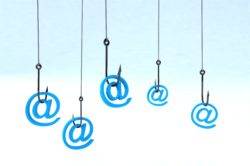The great thing about email marketing (well, one of the many great things) is the instant insight you get after sending a message. Did your audience love it? Did they hate it? Which links are getting the most hits? You can see the results roll in as time goes by. But it can be easy to get distracted by the data, rather than focusing on the key performance indicators (KPIs) that indicate the health and success of your email campaigns.
Let’s take a look at five email metrics that matter to marketers – and the teams they work with – and discover some of the ways you can improve these numbers.
For email marketing, the important metrics start with the basics: delivery, opt-ins, opt-outs, opens, and clicks. These can reveal key insights into your customers and prospects as well as about your marketing efforts.
1. Overall Delivery
 Delivery is foundational to the success of your email marketing campaigns. If your audience isn’t receiving your messages, your conversion rates will suffer. If they’re identifying your messages as spam, your entire organization will have to deal with the consequences.
Delivery is foundational to the success of your email marketing campaigns. If your audience isn’t receiving your messages, your conversion rates will suffer. If they’re identifying your messages as spam, your entire organization will have to deal with the consequences.
- Total sent: How many emails were actually delivered to recipients on the list? This number will tell you how many valid email addresses there are in your list.
- Not sent/suppressed: How many recipients were not sent a message? This includes invalid email addresses, duplicate email addresses, or those who are suppressed (because they have opted out or for another reason; perhaps you’ve sent them similar messages recently).
- Bounce rates: How many emails bounced back?
- Soft bounces happen due to a temporary issue, like a full inbox. It’s okay to resend to them, although at some point (say after three soft bounces) it’s a good idea to put them into a suppression list.
- Hard bounces mean the email address failed permanently – the address doesn’t exist, for example, or is no longer good. Don’t just suppress them; regularly move them out of your marketing lists.
- Abuse complaints/number of emails marked as spam: A spam or abuse complaint occurs when a recipient marks your email as spam, not when a webmail provider (or email client) tags your email as spam. Note that unsubscribes do not hurt deliverability, but spam complaints and hard bounces do. Your campaign’s complaints rate should always be below 0.1%.
If suddenly you have a spike in your bounce rates, look first to email content and structure. Your marketing automation service provider may be able to provide feedback about potential issues around your IP address. You may also need to clean out your email lists by purging or re-engaging anyone with a lack of activity.
Keeping your lists clean and your sending reputation good is a key step in your email success. Check out this eBook to learn more about the best practices to manage the critical factors that affect the deliverability of your email messages.
2. Opt-ins
 The opt-in rate tells you how many subscribers are on your list, as well as how quickly your list is growing. This metric gives you a good idea of the overall strength of your email programs. Slow growth may mean that you should be promoting your email more prominently.
The opt-in rate tells you how many subscribers are on your list, as well as how quickly your list is growing. This metric gives you a good idea of the overall strength of your email programs. Slow growth may mean that you should be promoting your email more prominently.
There are many ways to boost opt-ins for your email campaigns:
- Feature the email subscription prominently on your website, and make the benefits of signing up very clear.
- Test different versions of your opt-in landing page to optimize the volume of email subscriptions.
- Make it easy to sign up by asking for as little information as possible. Consider using progressive registration pages, so every time a prospect returns to your site, they encounter another form asking for additional data.
- Use a pop-up window or a splash page to encourage website visitors to sign up to receive email.
- Use “gated” content to acquire email addresses. Visitors must provide their information before they can download a white paper or watch a video. Remember that the form should include language asking them if they want to opt-in to receive email from you. Don’t use a pre-checked opt-in box; it’s perceived as an unwelcome assumption, and it’s illegal in some countries
- Run a contest. Use a prize to entice visitors to provide their email address, and encourage them to sign up for your email as well.
- Increase the reach of your message by adding social sharing links as well as a “Forward to a Friend” link in your email.
Remember, getting permission to send messages is not only the right thing to do; it’s the right way to ensure email marketing that actually gets results (and to stay on the right side of anti-spam laws). The most effective way to grow your email list is to do it organically. You will get better response from people who actively desire to receive your emails.
3. Opt-outs
 How many people have unsubscribed from your list? Do you know why? An increase in unsubscribes could indicate that you’re over-messaging your audience or sending them content that’s not relevant to their interests. Generally speaking, an unsubscribe rate of around .5% is average, but it depends on the industry and the audience. Use your own historical average as your benchmark.
How many people have unsubscribed from your list? Do you know why? An increase in unsubscribes could indicate that you’re over-messaging your audience or sending them content that’s not relevant to their interests. Generally speaking, an unsubscribe rate of around .5% is average, but it depends on the industry and the audience. Use your own historical average as your benchmark.
Keep an eye out for sudden spikes, and take action quickly.
- Take a good look at what you’re sending. Is it all hard sales, all the time? Is it marketing fluff? Or is it useful content that the recipients of the email will find valuable? Put yourself in their shoes. Would you unsubscribe from your email?
- Provide more content tailored to the specific interests and behaviors of your subscribers.
- Don’t over-message your audience. Too-frequent emails are a good way to drive up op-outs.
- Provide the option to receive emails less frequently on your subscription (and unsubscribe) page. Give your audience a personalized preference center where they can update their information, manage their options, indicate the content they want to receive, and choose how often they are sent messages.
- Ask people why they’re opting out with a short survey so you can understand the reasons they’re leaving. Be sure this is an optional step during the unsubscribe process.
- Set expectations up front about how often people will receive emails from you (daily, a weekly round-up, as items become available or go on sale). If you send infrequently, make that clear.
- Ask them to whitelist you (add your email address to their contact list) as they opt in.
- Confirm or double-confirm subscribers who opt in, when possible.
- Determine an optimal mailing time and frequency by looking at previous open and click trends.
- When people opt-out, take them off your list as soon as possible. Continuing to email them (even if you are doing so within the legal limit before opt-out must take effect) may irritate them enough so that they mark your message as spam.
4. Open rate
 Which emails did they open? How many times did they open them? This is an extremely useful metric to indicate how interested your email recipient is, although clickthrough rates are a better indicator of active engagement. Here are a few tips for improving your open rates:
Which emails did they open? How many times did they open them? This is an extremely useful metric to indicate how interested your email recipient is, although clickthrough rates are a better indicator of active engagement. Here are a few tips for improving your open rates:
- Make sure your list is high quality. Rather than purchasing lists, grow your database organically.
- Personalize the subject line and continually different test subject line options.
- Choose the right From name and email address.
- Test the frequency of sends as well as send times.
- Make sure the preheader text is pulling its weight.
Certain situations might affect your email open rates. For example, if the reader has images disabled, the invisible pixel graphic used to track opens will not be viewed, which means an opened email won’t register as having been opened. Viewing an email on a mobile device or as a text-only version can also fail to be noted, artificially lowering open rate measurement. To the same effect, if the reader views the email in the preview pane but doesn’t actually open it, it might not register as having been opened, even though they may have actually read the content.
5. Clickthroughs
 How many people clicked a link in your email, and how many links did they click? This is a clear indicator of engagement. We’ve already covered quite a few tactics to improve clickthrough rates, but here’s a summary of key points:
How many people clicked a link in your email, and how many links did they click? This is a clear indicator of engagement. We’ve already covered quite a few tactics to improve clickthrough rates, but here’s a summary of key points:
- Make sure the rest of your message follows through on the promise of your subject line.
- Focus on delivering high-quality content to your audience.
- Use segmentation strategies to increase the relevance of your offers.
- Test different call-to-action links and buttons.
- Make sure your email is optimized for mobile devices.
- Keep your call to action clear and simple.
- Entice action with a bonus, incentive, discount, or at the very least, some kind of value for the reader.
- Provide a call to action near the top of the email so the recipient doesn’t have to scroll down to click on it. They might even click on it through the preview pane.
What’s considered a good open or click rate? It depends on your industry and what kind of messages you’re sending.According to the 2014 Email Trends and Benchmarks report from Epsilon, email open rates have continued to go up over the last few years, while click rates have remained about the same.
Depending on the type of campaign you’re running, there may be other key metrics that matter to you and your clients, such as the amount of social sharing happening, the number of forwards, which email clients recipients are using, how many are using mobile devices, and so on.
Just getting started with email marketing?
Get the jump on it with this free toolkit:

